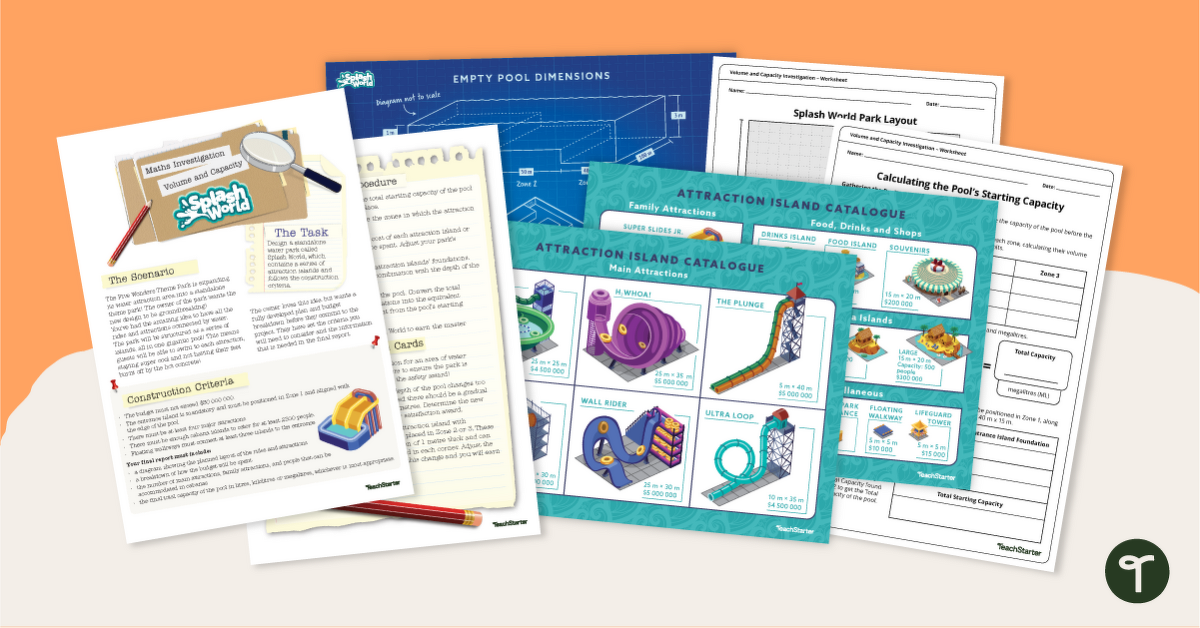Use this volume and capacity activity to expose your students to real-world volume applications by letting them design 'Splash World' — their very own waterpark!
Make a Splash With This Engaging Volume and Capacity Activity
Splash World is a dynamic and engaging volume and capacity activity that turns your classroom into a hub of creativity, critical thinking, and real-world maths application. In this investigation, students become water park designers, using their knowledge of volume and capacity to build a one-of-a-kind waterpark. They’ll convert units, manage a budget, plan strategically and present their findings in a final report. Perfect for year 5, 6 or 7 students, this volume and capacity activity promotes collaboration, problem-solving, and mathematical reasoning in a fun, purposeful way.
This volume and capacity activity includes:
- A detailed description of the investigation
- Splash World blueprint templates
- Attraction catalogues with capacity and cost information
- Recording worksheets and planning templates
- Three engaging extension tasks
- An answer sheet for the pool’s starting capacity task
- Award badges to celebrate the completion of the main task and each extension task
Capacity and Volume in the Real World
Looking for more ways to teach students about applications of capacity and volume in the real world? Here are some more engaging investigation ideas!
- Aquarium Architect – Challenge students to design aquariums for different species of fish. Each tank must meet specific volume and water requirements. Include filtration systems, decorations and food costs for realism.
- Beverage Business – Students create a line of drinks (smoothies, juices, etc.) and must decide on bottle sizes, production quantities and shipping container capacity. They’ll convert between units and calculate cost-effectiveness.
- Cooking With Volume – Host a classroom ‘cooking’ lesson where recipes must be adjusted (scaled up or down), requiring conversion between units.
Download This Volume Activity
This real-world volume activity is provided in easy-to-print PDF format. To download it, click the drop-down arrow on the download button, print it and go!
Additional Capacity and Volume Activities
We have more capacity and volume activities where this one came from! Take a look at some student favourites below.

teaching resource
Volume Escape Room
'Escape' ordinary volume activities with this engaging volume escape room that will have students solving volume challenges on a quest for a lost civilisation.

teaching resource
Fun Volume Activities
Bring maths to life with these fun volume activities that will have students building prisms, going on a scavenger hunt and estimating volumes!

teaching resource
Volume Game — BINGO!
Play our BINGO volume game with your students to give them engaging practice finding the volume of rectangular prisms.


0 Comments
Write a review to help other teachers and parents like yourself. If you'd like to request a change to this resource, or report an error, select the corresponding tab above.